Kingsford - Plant Tour
Photos from my tour of the Kingsford charcoal plant in Belle, MO!
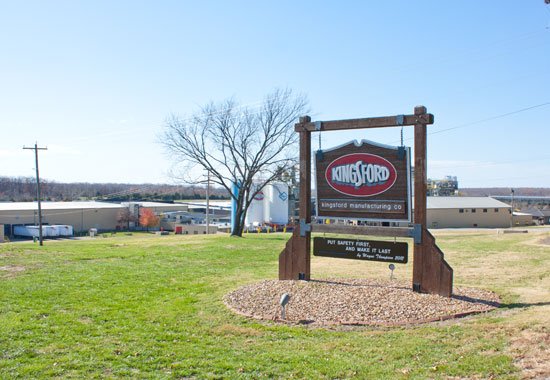
In early November I was one of the lucky few to be Invited to the Kingsford Invitational. In addition to hanging out with a bunch of my food writing/blogging friends and eating championship caliber BBQ, I got a special behind the scenes tour of the Kingsford charcoal plant in Belle, MO to learn how they make charcoal. Here are some of the photos that I took of the fascinating process of charcoal making. This was an awesome trip and a great behind the scenes look at a really impressive manufacturing process. Wonder how charcoal is made? Take a look!
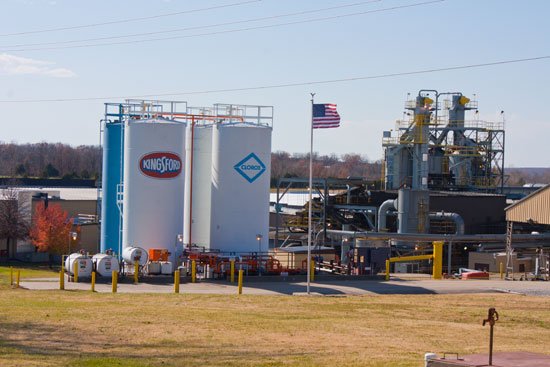
The manufacturing plant sits on many gorgeous acres of farm land. There was even a pond, a picnic pavilion and a ton of trees.
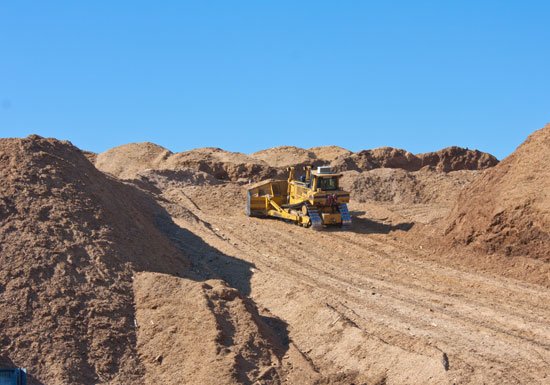
The first thing we got to see on the tour was this massive pile of sawdust and recycled wood. A bulldozer constantly pushes the sawdust and wood into a huge grinder which chips up the wood and makes the pieces evenly sized.
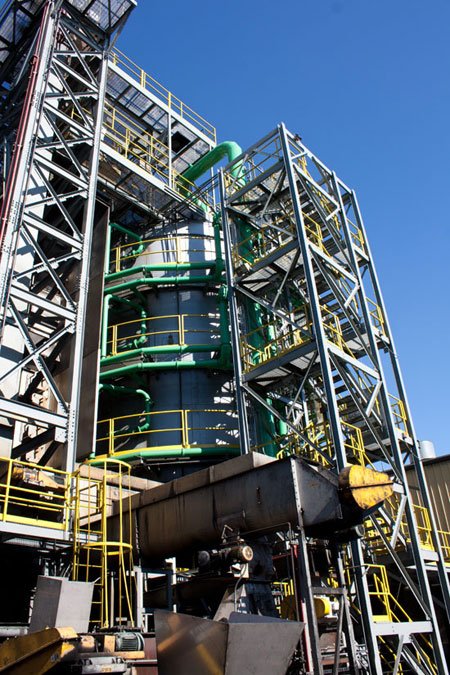
The next step is heating the wood to create the "char" in charcoal. I believe I heard the plant manager say that the sawdust/wood mix is heated to over 1000 degrees.
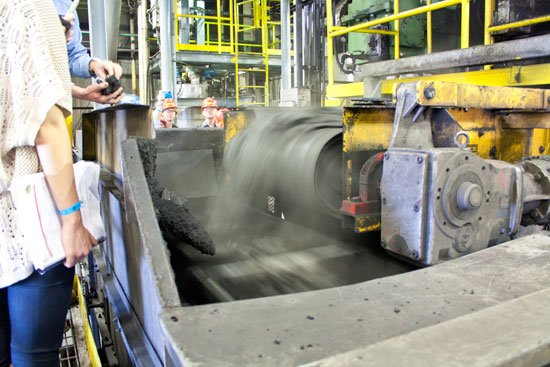
The charred wood is then mixed with a few other natural ingredients to help bind the mix together. The mix is then molded into the typical charcoal shape. At this stage we were handed a few pieces of coal. They looked and felt like warm brownies. I really wanted to get a photo of the "charcoal brownie" in my hand but my main goal was to not get charcoal all over my camera. So I refrained!
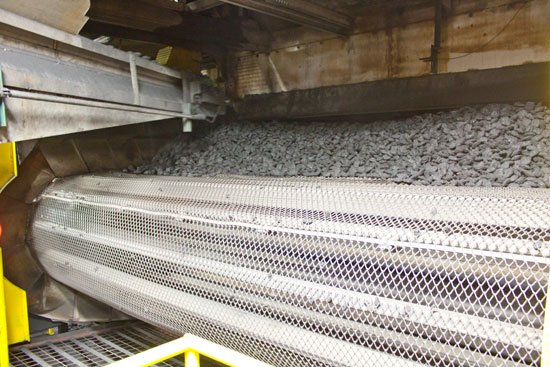
The charcoal is dried for a few hours and magically resembles the coal that we are all so familiar with.
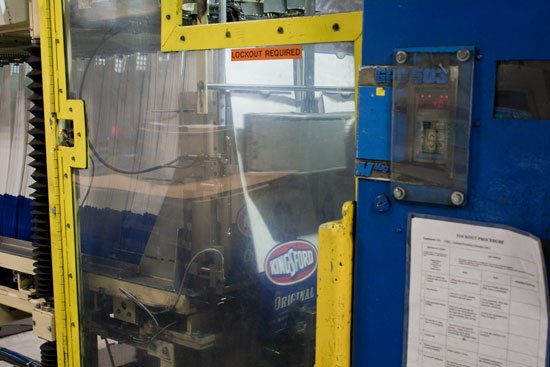
While I am a bit of a chemistry nerd at heart I think the most amazing part of the tour was the bagging stage. Hundreds of folded bags were opened up by a puff of air and instantly became ready to receive the freshly made charcoal.
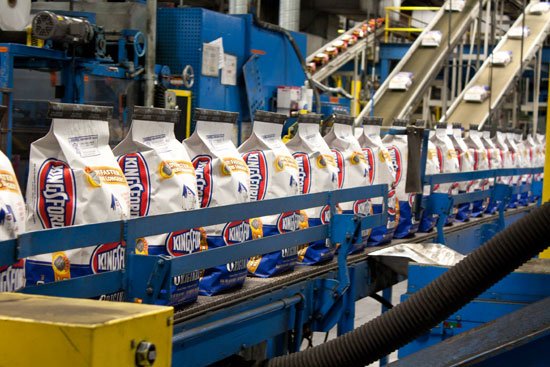
The charcoal is dropped into the bags and the top is sealed. Bags are continuously opened, filled and sealed around the clock. This is a fully automated process, according to the plant manager. Very minimal interventions are needed.
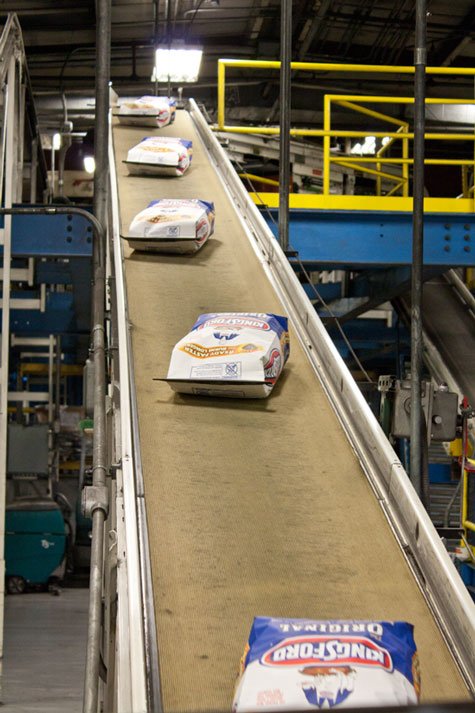
I was like a kid in a candy store with charcoal bags zipping all over the place.
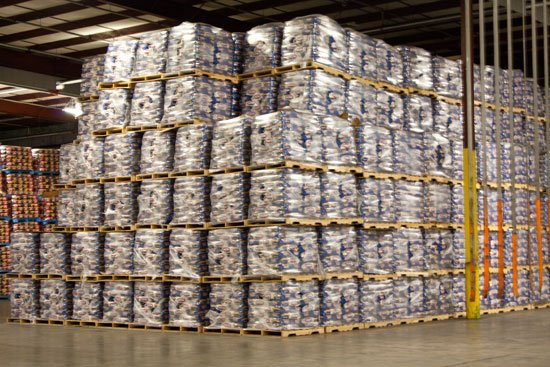
Warehouse after warehouse was full of freshly filled pallets of charcoal bags ready to be distributed.
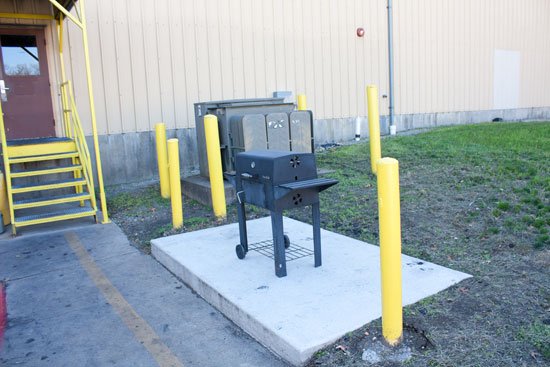
One of the most amusing things was that at every exit there seemed to be a charcoal grill. The plant manager joked that they are constantly testing out the product. Well now you know how charcoal is made.
Being around all these food writers, for a moment, made me feel like a real "food journalist." I decided to ask a few hard hitting questions:
Q1 - If Kingsford employees are caught using gas grills in their spare time are they fired immediately?
A1 - Plant manager: They aren't hired in the first place. We have a screening process.
Q2 - If you take a piece of charcoal that has been lit and ashed over for about 15 minutes and you cut it in half, is the inside grey or black?
A2 - Kingsford Research and Development Scientist: At the stage you describe it is black inside. Only after the burn process is extended beyond 15 minutes and more do we start to see grey throughout the charcoal.
I hope this taught you something about charcoal. I sure learned a lot and have a much greater respect for the Kingsford company. Not to mention the bitchin' lunch they served me after the tour!
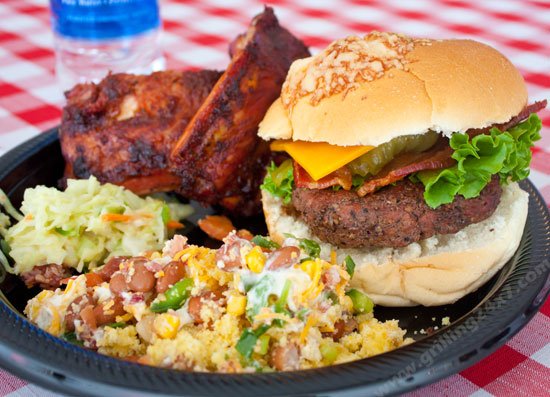

Comments
No Comments